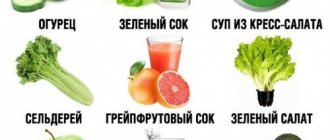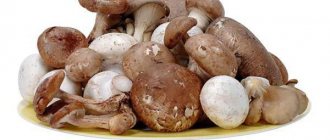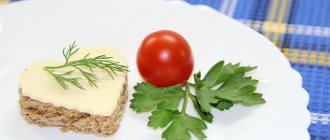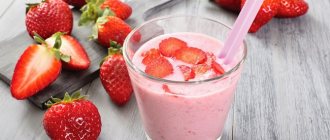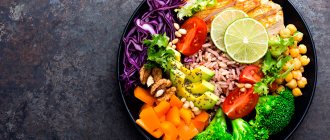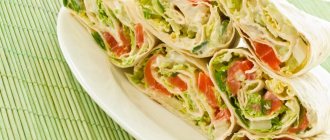Maintaining impeccable health and excellent well-being is impossible without proper nutrition . Both doctors and representatives of unofficial medicine advise consuming healthy and natural products. A healthy lifestyle and poor nutrition are simply two completely incompatible concepts. And in order to count yourself among those who care about their own health, you should not only monitor what is present in the daily menu, but also have a clear idea of how certain food groups affect the body.
How are vegetables good for the body?
Vegetables are present in literally every healthy nutrition menu. This group of products includes not only fruits, but also roots, leaves, and tubers. There are fruits that are biologically classified as berries, but, due to their taste and characteristics, are actually classified as vegetables. One striking example is tomatoes.
Any vegetables grown exclusively in a natural way have health value. They are vital for humans. Without them, the full functioning of cells, organs and tissues is impossible. This is due to the fact that they contain:
- trace elements and minerals;
- a small amount of vegetable protein;
- dietary fiber - fiber;
- vitamins.
The benefit of fiber for humans is that it promotes natural cleansing of the body. Against the background of a deficiency of this substance, decomposition products with toxins begin to accumulate first in the intestines, and then in other organs.
The list of vegetables that can be included in the usual diet is determined by which of them are most accessible. In our latitudes these are:
Carrot
It is a valuable source of carotene - vitamin A, has high nutritional and antioxidant properties, helps stimulate digestive processes and improve the quality of blood.
Cabbage
The most useful varieties are considered to be cabbage and broccoli. Cabbage contains a high concentration of fiber, several dozen microelements and vitamins. The vegetable crop is highly valued by doctors because it cleanses the blood of harmful cholesterol, resists the development of malignant tumors, and increases the protective functions of the immune system. Cabbage is no less valuable for dietary nutrition.
Garlic and onion
Champions in the number of phytoncides that have a positive effect on the immune system. These vegetable crops increase the body's resistance to bacteria, viruses, and toxins.
Tomatoes
Contains lycopene, lutein and many beneficial substances. Tomatoes have antioxidant effects and have a beneficial effect on vision.
Plant products, supporting all the vital functions of the body, also have a therapeutic effect and help in the treatment of dysfunctions, disorders of organs and systems. Their use on a regular basis allows you to resist the development of many pathologies and diseases.
The healthiest vegetables and herbs
The benefits of vegetables have long been a commonplace, but how many people know why they are so beneficial? First of all, vegetables contain many vitamins and minerals. It also contains carbohydrates, but they are easily digestible and maintain stable blood glucose levels for a long time. So, what vegetables should you include in your diet?
- Broccoli. They are useful not only fresh, but also stewed. Broccoli contains protein, fiber, and vitamin C.
- Carrot. Carotene, which is contained in carrots, is necessary for the skin, eyes and mucous membranes.
- Cucumbers. This is one of the lowest calorie vegetables, which at the same time contains a lot of potassium.
- Bell pepper. Not only a sweet and crunchy vegetable, but also an invaluable source of ascorbic acid and antioxidants.
- Asparagus. It contains few carbohydrates, but a colossal range of vitamins and microelements.
- Cauliflower. It contains much more vitamin C than regular cabbage, and also contains phosphorus, potassium and iron.
This is not a complete list of vegetables that should be included in your daily menu. However, it is important to consider that they bring maximum benefits fresh or steamed. Roasting reduces the amount of vitamins in food.
Benefits of fruits
Natural, fresh, unprocessed fruits are of great value for the endocrine, cardiovascular, and digestive systems. They also contain a large amount of fiber and also normalize weight indicators. Fruits have a similar composition to vegetables and are an integral part of the diet.
The greatest value for a person is:
Apples
Rich in pectin, iron, fiber. The multicomponent composition has endowed this fruit with the ability to stimulate the process of natural elimination of harmful cholesterol and toxins, have a positive effect on intestinal motility, and reduce weight if consumed regularly.
Bananas
A natural source of natural carbohydrates, fructose and potassium.
Avocado
Contains unsaturated fats, microelements, vitamins, has an anti-carcinogenic effect, stimulates the process of collagen production, and, therefore, promotes rejuvenation of the body.
Fruits, according to the recommendations of doctors and nutritionists, should be present in the daily menu, since they support the normal function of the gastrointestinal tract, vascular and nervous systems, and prevent many diseases. However, when choosing these products, you should give preference to those grown in ecologically clean regions, without the use of synthetic and chemical stimulants.
Berries
They have properties similar to vegetables and fruits, with the exception of the composition, in which vitamins, nutrients, and microelements predominate, and the amount of fiber is not so high. They are natural antioxidants that regulate metabolic processes in the body, have a great taste and are a product that can be consumed as an independent dish.
There are many berries that are useful for humans, including strawberries, cloudberries, cherries, sea buckthorn, raspberries, grapes, blueberries, black currants, game, cranberries, and bird cherry. There are berries that are used as medicines and raw materials in the pharmaceutical industry for the production of herbal preparations.
What foods are considered healthy?
The whole variety of food can be divided into several groups: vegetables and herbs, fruits and berries, dairy products, protein foods and cereals, nuts and seeds, sweets. Each of these groups contains foods that are high in nutrients, and it is advisable to have foods from each category in your diet. For example, natural dark chocolate contains many amino acids, iron and other healthy components, and almonds are rich in vitamin E. Lentils and beans are rich in vitamins. However, medical statistics show that Russians eat critically few vegetables and fruits, so we will focus on healthy foods from these groups.
Beans
They contain complete plant protein, fiber, vitamins, antioxidants, and microelements. Legumes do not contain harmful fats, but due to the presence of special substances, which, according to scientists, effectively resist the process of formation of abnormal cells, which subsequently form cancerous tumors.
The fiber present in them cleanses the digestive tract of undigested food residues and toxins. Since legumes belong to the category of “complex” carbohydrates, they are digested rather slowly, but they saturate the body with a large supply of nutrients and provide it with energy for a long time.
Nuts
Rich in iron, protein, zinc, carbohydrates, chromium, vitamins C, E and B, they are hard-skinned fruits containing kernels that can be eaten plain or used in a variety of dishes. Distinguished by their excellent taste, nuts can give you a feeling of fullness almost immediately after consumption and are a ready source of energy.
Nuts are not just a tasty and nutritious treat, but also an excellent therapeutic agent in the fight against various ailments. It is especially useful to eat chestnuts, walnuts and hazelnuts, cashews, peanuts and almonds.
Healthy recipes for healthy eating for breakfast
The proverb, familiar from childhood, “Eat breakfast yourself, share lunch with a friend, and give dinner to your enemy” has a completely logical and competent medical basis. The food that nutritionists recommend eating in the morning should be light and at the same time nutritious in order to awaken the metabolism from a night's sleep, invigorate the body with a shock dose of vitamins and bring a generous portion of energy resources necessary for the implementation of further plans for the day.
If you are planning to make a quick breakfast without sacrificing the healthiness of the dish, simple and detailed recipes for preparing proper nutrition from qualified nutritionists will help you.
Classic oatmeal with berries and dried fruits
I can talk about the benefits of oatmeal for hours! It is rich in fiber, fats and protein compounds, which are very easily digested by the body, so oatmeal is considered dietary and at the same time quite nutritious. The vitamin and mineral complex of oatmeal includes magnesium, chromium, calcium, potassium, phosphorus, vitamins A, E and C. Regular consumption of oatmeal for breakfast helps reduce cholesterol levels, relieve symptoms of intestinal disorders and restore digestion.
You will need:
- ½ cup oatmeal;
- 1 glass of water;
- dried fruits (raisins, dried apricots, dried bananas or prunes) to taste;
- berries (currants, cranberries, strawberries or grapes).
How to cook delicious oatmeal?
- Rinse the oatmeal, cover it with running water and cook over medium heat for about 5-7 minutes, skimming off any mucus that has formed on top.
- Reduce heat, add chopped dried fruits and leave the porridge to simmer for another 5 minutes.
- Remove the pan from the stove, sprinkle with berries and stir.
A tasty and satisfying breakfast is ready. You can add a little yogurt or sweeten with honey - this will only make the oatmeal healthier!
Fruit salad “Vitaminka” with flax seeds
The highlight of this dish is flaxseed, rich in essential Omega-3 fatty acids, lignins, fiber and a vitamin-mineral cocktail that aids digestion. The components of flaxseed promote rapid saturation, help remove toxins and waste from the body and speed up metabolism.
As a basis for the Vitaminka salad, you can use any fruit that you have on hand - an unexpected combination of them sometimes turns out to be a pleasant discovery for a novice cook.
The classic fruit salad recipe includes:
- kiwi;
- orange;
- banana;
- apple;
- 2-3 tangerines;
- 25 g flax seeds;
- a tablespoon of honey;
- a glass of fermented baked milk.
Just cut the fruits, mix them with honey and flaxseed and season with fermented baked milk. Obviously, all fruits must be peeled, but the apple can also be eaten unpeeled. The fact is that apple peel contains a large amount of valuable biologically active substances that have a pronounced antioxidant effect on the body, and also improve blood circulation and help reduce symptoms of inflammation. Therefore, if the apple peel is not too hard, it is better to leave it.
It is also worth considering that 25 g of flax seed is the daily requirement for the average adult, so if you have already eaten a full portion for breakfast, you should not consume flaxseed during the day.
Sweet pumpkin rice porridge
Rice porridge with pumpkin, seasoned with honey and vanilla, is loved by both adults and children. Its delicate consistency and pleasant sweetish taste will attract even those who are not used to having breakfast, and the notes of vanilla will make you completely wake up from sleep.
To prepare the right morning meal you need:
- 200 g rice;
- ½ liter of water;
- 500-600 g pumpkin;
- 1 vanilla pod;
- honey to taste.
Steps for preparing delicious rice porridge:
- Peel a medium-sized pumpkin from the hard skin and cut into small strips or cubes.
- Sweeten the pumpkin with honey, add rice and cover with running water.
- Cut the vanilla pod lengthwise, place it in a saucepan and let the porridge simmer for 20-30 minutes over low heat (until completely cooked).
After the pumpkin-rice porridge is cooked, leave it for 15-20 minutes to “cook”. After that, feel free to invite your family to breakfast - you can be sure that you won’t have to persuade them for long!
